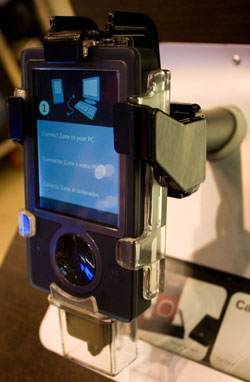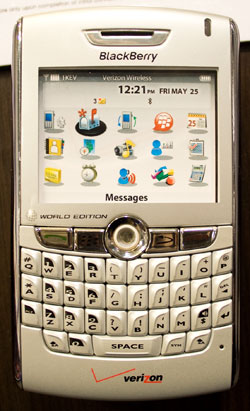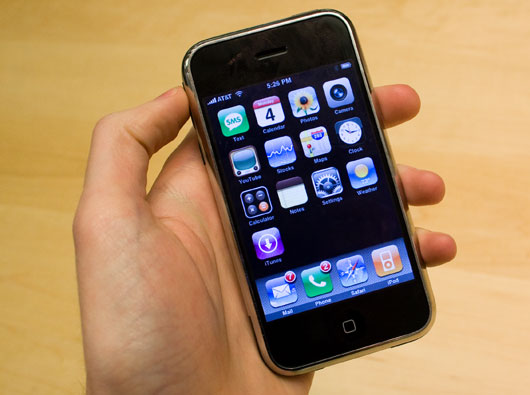Demoing the Experience 02-07-2008
One of the most common ways to sell a customer on a product is to allow them to engage the user experience themselves–the try before you buy approach. It’s why electronics stores have rows and rows of TVs, sound proof stereo listening rooms, video game demo stations, and plenty more. Whether the customer makes a purchase or not, he has gotten a taste for that product, which will resonate far more than any product photo or video could.
Unfortunately, there are times though when the intentions of providing a hands on experience are stifled by elements such as over zealous anti-left systems, which can ultimately leave the customer with a negative perception of a product. This is especially the case for products such as mobile devices: laptops, digital music players, wireless phones. These are devices which are meant to be picked up, held in the hand, and moved around.
Laptops
Visiting a BestBuy or Circuit City, customers are sometimes faced with laptops which are so locked down a person can’t even comfortably rest their hands on the keyboard just to simply see how it feels–nor pick it up to feel the weight. Certainly two major points when deciding which laptop will fit that on-the-go lifestyle.
The majority of modern computing is done with the compliment of the Internet and many of these stores do not demo laptops with active Internet connections. Resulting in a demo experience which does not accurately meet a customer’s typical computer activities–Minesweeper isn’t exactly the ideal demo software.

Digital Music Players
Similarly, Microsoft’s Zune digital music player demo display almost exudes an aurora of don’t touch, just look. For a device which is designed to be held in the hand, the Zune’s demo display strictly prohibits the possibility by the presence of a metal shaft where a person’s hand would rest. Proving to diminish the possibility for the customer to envision the device as part of his lifestyle. It is also encased in a plastic and metal holder, which unfortunately adds perceived size to the device. Where size is a great concern for mobile devices, this certainly does not help to convince the customer of the product’s true thinness.
One of the Zune’s major selling points is its ability to play video in a horizontal orientation allowing for a more movie-like viewing experience. Yet the demo display makes the act of trying to experience this prohibitively difficult, unnatural feeling, and ungraceful. With its awkward enforcement of allowing the device to be rotated only one way, it appears clunky.

Wireless Phones
In America, wireless phone providers are in the game to sell phone service as opposed to phones, but this does not mean that providing customers with the ability to experience their offered phones should be neglected. All too often customers are shown a bolted down, gutted out phone with a sticker acting as its screen. Aside from the fact that the customer can barely hold the device in his hand, he can not even experience the user interface and actively demo those said features. This shell of a phone also all to often gives the impression of the phone being cheap in terms of quality of materials. It is no wonder American consumers assume wireless phones should be cheap in price as well.
Choosing a wireless phone becomes a blind faith decision, based mostly on wireless provider, price, and a feature list. The advancements in mobile user interfaces have been quite pitiful, much of that could be attributed to the fact that customers really have no opportunity to compare shop. Not to mention that for the majority of people, once they purchase the phone they are locked in for two years with it.
Demoing the Experience Properly
Apple is often given the gold medal for doing things right in many aspects and in providing customers with the ability to truly demo a product, they achieve it perfectly. Every iMac, MacBook, and iPod at their retail stores is free to use unrestricted–often tied down by only one unobtrusive security wire. They can be picked up, held in the hand, and used just as they would be in a customer’s real life.
It is a major factor in why Apple is able to sell so many units. A customer can walk into an Apple Store, pick up an iPhone, make a phone call to a friend, write a text message, check their email, and visit a web site. There is no blind faith decision to be made. The customer doesn’t have to buy the device first to find out how much it weighs in their hand. No contracts have to be signed before the user interface can be truly experienced.
